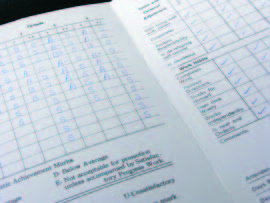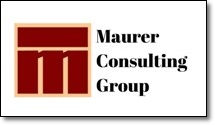‘Designing Strategies’ newsletter
July – August 2005 Volume 2 – Issue 6
We’re already past the middle of the year. Depending on when your fiscal year begins, you should be thinking about strategically planning for the next few years of a path toward success. Of course, you’ve been routinely tracking your progress, successes and failures alike. Will all goals and objective be met by year’s end? Now, where did you put that plan after last year’s retreat? Oh, there it is, sitting on the shelf
collecting dust beside the business plan and policy manual. If this is your situation, you are not using strategic planning to move your company to new heights. Your strategic planning has become an annual event, not an on-going, living, fluid management tool.
Make your strategic plan a living, breathing management process
 If a strategic plan is to create success and move you toward your goals, you have to take it out and use it. Merely having a planning retreat “because it’s the thing to do” means nothing if the plan you develop is not a well-thought out road map to get you where you want to go. Further, if you don’t bother to follow your map, you won’t get there at all. It’s a tough world out there. Competition is at its most fierce level. Companies that seem to have been around forever are disappearing or being gobbled up by larger predators. The firm with the plan, the vision and innovation, and uses them, will successfully get to the finish line. Will you?
If a strategic plan is to create success and move you toward your goals, you have to take it out and use it. Merely having a planning retreat “because it’s the thing to do” means nothing if the plan you develop is not a well-thought out road map to get you where you want to go. Further, if you don’t bother to follow your map, you won’t get there at all. It’s a tough world out there. Competition is at its most fierce level. Companies that seem to have been around forever are disappearing or being gobbled up by larger predators. The firm with the plan, the vision and innovation, and uses them, will successfully get to the finish line. Will you?
So, how are you using your plan, assuming, of course, you have a plan? Do you review it regularly with your managers to assure everyone is on course and working within the time frames set for completion? If not, consider changing or adjusting your course to find a way to get back on track. Timing is everything. To be effective, all involved parties need to be at the same stage of a task or project at the appropriate time. Qualitative and quantitative measurements are critical. Assign a means of measuring and tracking results. Review the results when updating the plan. Statistical data you collect from year to year, or even quarter to quarter, plays a key part in developing updated plans for growth and success. Following trends and analyzing statistics of the past can provide insightful focus into the future.
Develop a strategic planning score card
 Develop a strategic planning score card review process to analyze degrees of completion and levels of success at regular intervals. This should take place at least quarterly, but even better would be bi-monthly or monthly. This does not need to become a major process that takes managers away from their assigned tasks. Some of the latest business models and management tools require enormous amounts of time, and reams of paperwork from managers.
Develop a strategic planning score card review process to analyze degrees of completion and levels of success at regular intervals. This should take place at least quarterly, but even better would be bi-monthly or monthly. This does not need to become a major process that takes managers away from their assigned tasks. Some of the latest business models and management tools require enormous amounts of time, and reams of paperwork from managers.
Keep your review process simple. At the end of each year, ‘grade’ the entire plan. Consider which goals and objectives should be preserved and built upon, which need improved, and which should be chalked up to bad ideas and just completely eliminated. Each time your team meets to develop a strategic plan, think of it as a chance to review and renew the vision and mission for your company’s success and growth. Watch for new opportunities in the ever-changing economy, politics, social and cultural make up of your customer base, and the newest in technology. What bright, new vision manifests itself and what new goals will get you to that vision?
Something To Think About…
“Management is nothing more than motivating other people.”
Lee Iacocca
A study conducted last fall by Bain & Company shed some interesting light on companies using strategic planning. Chief executive officers were polled and revealed that 85% felt that they are good at strategic planning. But, only 40% felt that they can execute the strategies well. Sadly, only 10% felt that their organizations were aligned with their strategies.
 Bain & Company work with ‘The Big Guys’ – the really, really big companies with billions in annual revenue. That doesn’t mean as a small business owner you can’t do the same things, just on a smaller scale, to achieve big things. Where do you and your company fall in these statistical categories? If you are in that last group, what can you do to get your company back on track? If you are in the middle group, what can you do to elevate your level of competency in implementing the plan?
Bain & Company work with ‘The Big Guys’ – the really, really big companies with billions in annual revenue. That doesn’t mean as a small business owner you can’t do the same things, just on a smaller scale, to achieve big things. Where do you and your company fall in these statistical categories? If you are in that last group, what can you do to get your company back on track? If you are in the middle group, what can you do to elevate your level of competency in implementing the plan?
In the end, it is people who make it all happen. It is important to evaluate the day-to-day processes and culture of your company. Determine how well they match the needs of your strategies. As leaders of your organization, you will be the ones to set the tone, define the future and encourage your human resources to follow your lead. This may mean bringing in new people or moving some existing people around to better utilize their skills. Implement training, mentoring or coaching programs to bring untapped potential to the surface.






